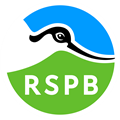Story
Shetland is a truly special place for wildlife and people. Across our work in Shetland we cover a wide remit of work, we restore, create, protect and enhance the habitats for some of the unique and amazing species that live here. From the Southern tip of Shetland at Sumburgh Head, to the far north in Unst we manage a range of sites and habitats for the benefit of wildlife, carrying out extensive monitoring and practical improvements across all our managed sites. See below for examples of the work we cover.
Peatlands-
Over half of Shetland’s land mass is covered in an important peatland habitat called blanket bog, sadly around 70% of this habitat is highly degraded. Shetlands peatland provides many important ecological roles, numerous diverse species call it home, during the summer months we have a plethora of bird species that use it to breed. Waders such as dunlin and snipe enjoy the wet ground as it provides them with plenty of feeding opportunities and Bonxies (Great Skuas) swoop across the bog and bomb would be predators. Sphagnum moss is the main star of the show though, as it is one of the main builders of peat and making sure this damp loving species is thriving is key to a healthy blanket bog. Peat is an effective carbon store that aids in combating climate change, a healthy peatland also allows for a better filtration of rainwater, which in turn lowers the cost of water treatment for local facilities.
On our Lumbister nature reserve in Yell, we have been working hard to reverse this damage and restart the processes that form peat. Our team have been working tirelessly to map out Lumbisters degraded features which can be found across the site. These include drainage ditches, actively eroding hags and gullies, areas that require damning to slow the flow of water and areas of flat bare peat. Contractors are then brought onto site and using the information gathered start the restoration process, this is done during the winter months to avoid disturbing breeding birds.
Mix of reserves--
Managing for Red-necked Phalaropes is our priority in the north. This requires vegetation management through cutting and grazing, pool excavations, water control and limiting the risk of accidental disturbance.
Whether it is a characterful puffin, a bubbling whimbrel or a diminutive storm petrel, we look after these amazing species and deliver the interventions to ensure they are able to thrive. If you have enjoyed some of Shetland’s wildlife, please consider helping us by donating to our work.
RSPB are passionate about nature, dedicated to saving it. Since we started on our mission in 1889, the threats to nature have continued to grow, but we've grown to meet them too.
We’re now the largest nature conservation charity in the country, consistently delivering successful conservation, forging powerful new partnerships with other organisations and inspiring others to stand up and give nature the home it deserves.
With your fundraising support and donations to conservation you can help us to give nature a home in Shetland.
